
La Madelene B&B, Malaucene
This B&B is located between the villages of Malaucene and Entrechaux, near the base of Mont Ventoux.

© SeeProvence.com
Discover the top Provence mountain-biking
Provence has a real mixture of terrain and trails - something for riders of every ability, from complete beginners to the hard-core expert downhill riders.
And if you don't have all the gear, you can rent it when you get here either through your accommodation provider or through local sports shops and mountain bike guides.
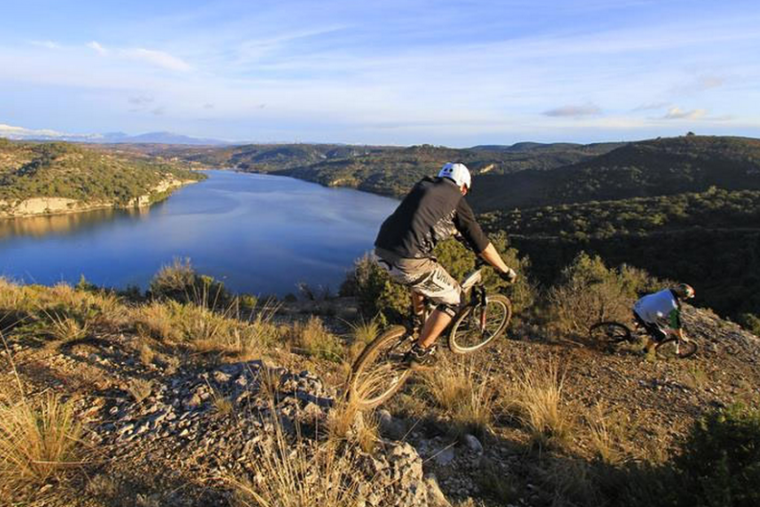
The diverse landscapes of the Provence region ensure that every ride will be a memorable experience, with stunning views, possibly some lung-busting technical ascents, lots of wooded and open rocky single track, downhill specific tracks with tricky descents, cross country way-marked loops and a bit of lift access for those not keen on pedalling uphill.
Provence's geographical location and fantastic climate allows for biking all year round. The dry trails and winter sun ensure that it's the place to head if you aren't drawn to the snow and mountains, but prefer to continue mountain biking when everyone else hits the slopes.
There are several 'Grandes Traversees' for those who want to take on the challenge of one of these gruelling week long itineraries - the Trans Verdon, a mere 260km of beautiful but technical riding, or the Trans Provence which goes from Sisteron to Menton and has been turned into an endurance race each year.
Provence can certainly be technically challenging with such varied terrain, from sweeping single track to limestone rocks and dust, wooded rooty areas to steep mountains and seriously scary ridges, some of the trails are definitely not for the faint hearted. If you're looking for an easy level of riding, there are plenty of low level cross-country trails and graded trails through small villages that have been checked and way-marked by the FFC (Federation Francaise de Cyclisme). Most routes can easily be follow on a map, or with the multitude of signs along the trails.
We have compiled a list of some of the more popular cycling routes in Provence. We have concentrated on routes that are suitable for everyone, rather than hard core cyclists. As Provence has mountainous and flat terrain, you can choose your route to suit your purpose - we promise you that there is something for everyone.
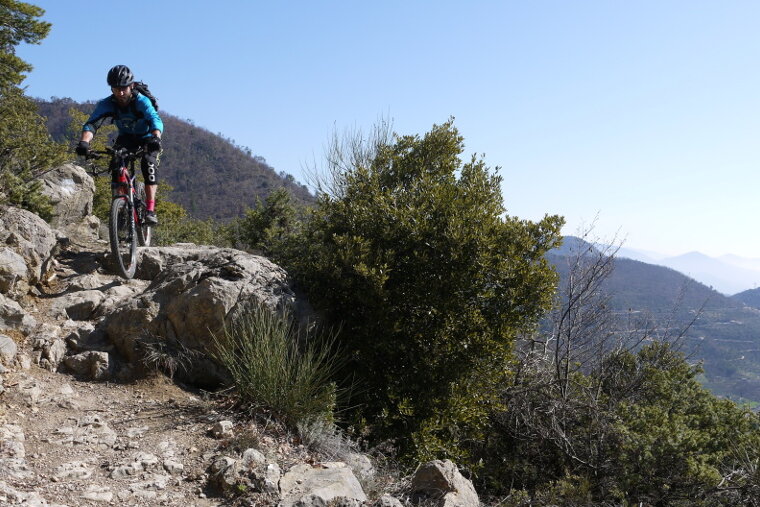
Whether to go full-suspension or hardtail is a question which creates a lot of healthy debate amongst the mountain biking community. Whether you're renting or buying you should first decide which type you're looking for, and there are numerous makes and models of both types available.
So what's the difference?
Full-suspension: Both front and rear suspension that is effective at absorbing lumps, bumps and jumps, thus providing better performance and a smoother ride.
Pros:
Cons:
Hardtail: A bike with no rear suspension. Suspension forks may be at the front of the bike but its back post is rigid.
Pros:
Cons:
Renting
If you plan on renting equipment then there are plenty of Provence mountain bike hire shops hiring out both full-suspension and hardtail mountain bikes. On average you can pay anywhere between €16-€80 for a day's hire, depending on whether you select a bike with or without suspension. It's also possible to hire mountain bikes for children from around €15 a day.
Buying
There are numerous makes and models of both types available to the potential buyer so when deciding on which type of bike is best, it's important to consider the following:
Bringing your own bike
If you bring your own bike then there's no point filling your excess baggage with spare bike parts (unless your bike requires specific specialist component parts). Provence has some excellent biking shops that sell plenty of spare parts and components for your bike. However, remember the spares list does not extend to some obscure pivot in your one off special downhill rig. We're talking rear mechs, pedals, cranks, chains, cassettes, brakes, brake pads, cables etc from the more popular manufacturers. The exception to this rule is the rear gear hanger; bring one with you for your bike, especially if it’s of the super funky alternative/rare type. The bike shops do not carry this part for all the different bike manufacturers and models, and it's probably the most frequently damaged part in the event of a crash. Even a relatively innocuous fall can damage this part and although they can often be bent back into shape, it would be a shame to ruin your holiday if this were not the case.
Before you travel
It is highly advisable to ensure your own bike is in tip top condition before lugging it all the way over to France. A day riding here equates to many rides in the UK, and the wear and tear on your bike reflects this. If you start the week with your bike in a poor to average state of repair it will let you down at some point and spoil the day, if not the week's enjoyment. If you're not a competent bike mechanic then have your local bike shop service your pride and joy. It's also money well spent to upgrade your tyres if they are of the lighter weight cross-country variety, and purchase some free ride tyres with a 2.3 section to smooth your way and avoid the punctures. There is every chance a set of brake pads will disappear in a week, so bring a spare pair and carry them with you on the trails to avoid that metal on metal effect! If you run out of time before you come away, Provence local bike shops will be able to carry out a service for you.
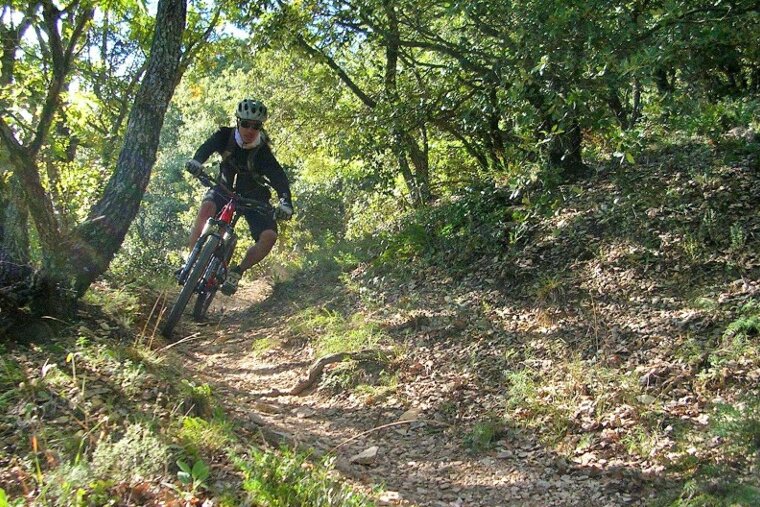
When out and about on the trails, here's a checklist of what you will need:

This B&B is located between the villages of Malaucene and Entrechaux, near the base of Mont Ventoux.

This small hotel lies just to the east of Bedoin village in Sainte Colomb, within easy reach of Mont Ventoux.
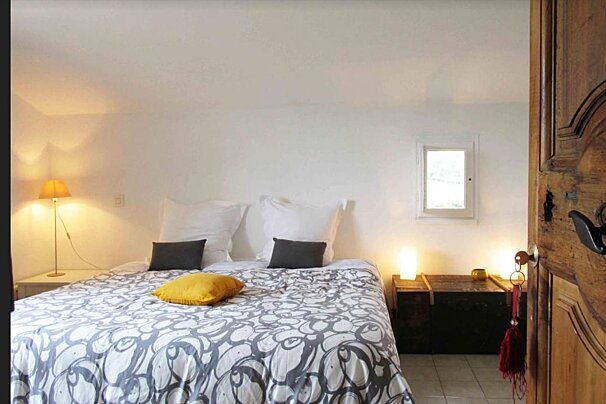
Located just 2 kilometres north of the village of Malaucene, this charming B&B has great views of the surrounding mountains and countryside.

Hotel des Pins has 25 rooms and suites, a restaurant, a terrace, and a garden.
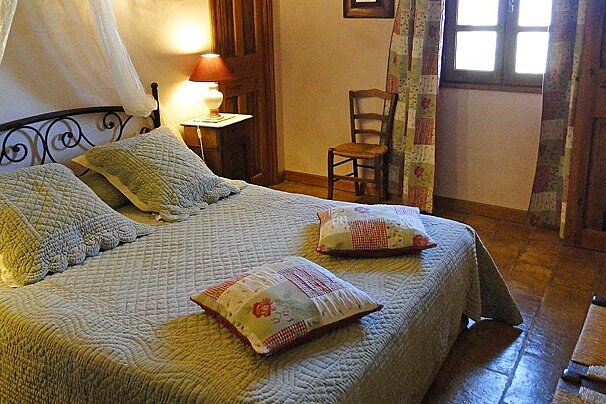
This B&B has unbroken views of the mighty Mont Ventoux and is decorated with a charming mix of old and new fixtures and fittings.

This fortified farmhouse has been converted into a lovely B&B not far from Bedoin village centre.

A review of the main airlines' Terms and Conditions, in relation to sports equipment/baggage, indicates that it's highly likely that you will be subject to a charge for taking your bike on board. Easyjet, Aer Lingus, Ryanair, and KLM all charge an additional one-way fee to carry your bike. At time of writing British Airways (and their partner Swiss Air) does not charge extra fees for taking bikes on their planes, providing they fit within the free baggage allowance and are packed in a hard shelled container, but we recommend you always check when booking.
Make sure that the combined weight of your luggage does not exceed your allowance. Although you may have paid an excess for your bike, its weight may be added to the weight of your hold luggage and there can be a penalty for any kg over the allowance.
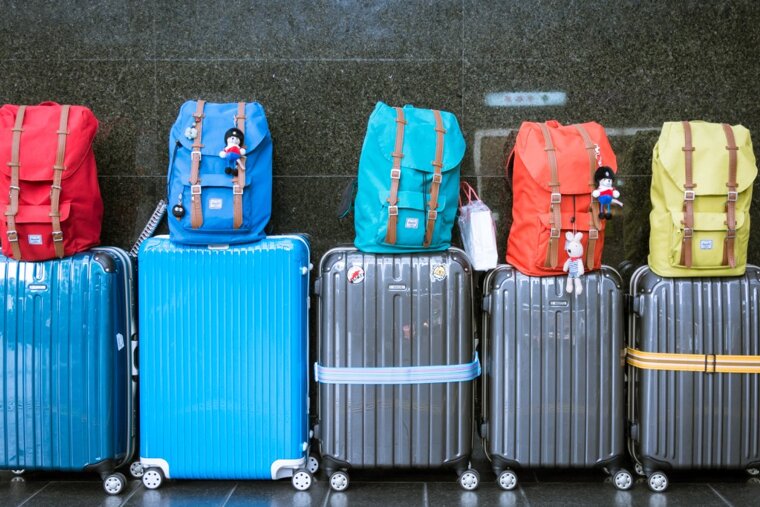
There are a few options available in transporting your bike. The rules and regulations of flying with a bike do vary massively across the carriers, so it's crucial that you follow their guidelines, and recheck them every time you fly as they can change quite frequently. On their websites you should find a sporting equipment or special baggage page where you'll find their policies. Generally speaking most airlines will require you to bag or box your bike, and contact them in advance to confirm/reserve your bike's spot on the flight.
Hard bike boxes tend to cost in the region of £300+ and like a hard case suitcase it will minimise the risk of damage occurring to your bike, but they are heavier. A soft bike bag is the cheaper option, costing around £100, but its protection is not as reliable as the hard box.
Most airlines stipulate the following:
If you're transporting your bike, you should also check out your travel insurance arrangements. A lot of travel insurance companies will not cover your bike without an additional excess payment, and a lot of airlines will not be held responsible for any damage sustained whilst the bike is in their care. Check out your household insurance policy to see whether it can be covered as 'contents away from home'. There may be a slight surcharge for this option, but it's potentially better than having to fork out for a new bit of kit, or a brand new bike.
Bike packing options:
Top Tips:

Going on holiday to France with your bike is pretty straight forward, but as with a lot of things, it's better to book in advance.
The Eurostar
Currently only allows you to take your bike on selected trains between London and Paris, so it's best to book early to avoid disappointment. At the time of writing, Eurostar was working on reopening the service to other destinations in the near future, so check available routes before you start planning.
Here's how:
Once you're in France getting around with your bike can be straight forward, but again planning ahead and getting to the station early are highly recommended.
Domestic or regional trains (TER) and tourist trains
Quite often they allow you to transport your bike for free, although you may have to put it in a bike compartment, hang it from a hook to save space, or fold it up and take it on as hand luggage. Spaces are limited and you cannot reserve in advance, and in some regions bikes aren't permitted Monday-Friday during rush hours as the trains are too busy with pedestrians.
TGV InOui
You must book a space for your bike if it's non-folding and this needs to be done when you buy your ticket. Your seat will automatically be placed near to the bike rack. If there's no option for a bike to travel with you it means the train in question does not have space available. If your bike is foldable or dismantled in a bike bag it can travel for free without a specific reservation as long as it fits the dimensions: 130x90cm.
Regional trains
In Ile-de-France, (the region surrounding Paris), these trains are called Transilien and they are the country’s busiest commuter trains. They operate into all of Paris’ stations and run on lines with a letter associated (line K, line P, etc.). They also include the RER trains, which run on lines A to E. You can take your bike on board a Transilien Monday-Friday, before 06:30, between 09:30 and 16:30, then after 19:30; at any time on weekends and public holidays and at any time if it's folded or placed in a bike bag and does not cause fellow passengers any inconvenience.
Intercity trains
It's best if you can dismantle your bike and carry it on in a bag no more than 130x90cm. Some of these trains require a seat reservation, whereas others do not. Consequently, according to the type of train, it may or may not be necessary to book, or pay, for a place for your bike.

Stone King Rally
The last Trans Provence mountain bike race was held in 2019, and since then the Stone King Rally, supported by giant bike brand Santa Cruz, has taken up the baton so-to-speak. An epic enduro stage race held in the French Alps, a point-to-point enduro rally with a course that begins on the edge of the high south western Alps and ends at the Mediterranean Sea. The course crosses Queyras Park, the Occitan Valleys of Piedmonte, the wild Roya Valley and the sacred hills of Liguria.
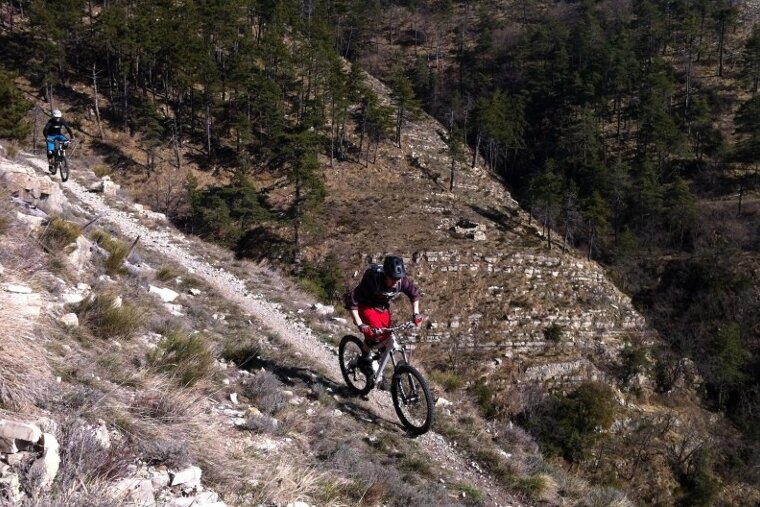
This is an industry that has seen incredible interest and growth, post-pandemic, largely due to rising technological advances and rapidly charging batteries, and it being a cheaper alternative to mainstream transportation. People are also more aware of the health benefits, and e-bikes offer access to getting out and about in a less strenuous way. Plus, they are seen as the eco-conscious alternative to motor vehicles, and with policymakers developing cycling infrastructures across towns and cities the world over, bike use has rocketed generally. In fact over 25% of money spent on mountain bikes in 2020 was on e-bikes. Specialized - one of the big three - was one of the first to introduce e-bikes to their mountain bike line-up, realising that the learning curve and fitness curve for mountain biking was steep and harsh. If riders had an eMTB they were more likely to enjoy the experience and then more likely to want to ride again. Now almost every bike brand has several eMTBs on offer with their ranges steadily growing. Also eMTBs now have their own XC World Cup category, meaning this sport is only going to keep growing.
The industry does suffer from supply issues, and since Covid supply chains from Asia have become complicated, transit times have doubled and container costs more than quadrupled. So when you find the eMTB for you, be aware you may have to wait quite a while for it.
What is an eMTB?
A mountain bike with an integrated motor that assists the rider when pedalling. There isn't a throttle, so if you don't pedal there is no support, and they only provide support up to a certain speed limit: the speed limit in Europe is 25km/h and 32km/h in North America. Whether they are hardtail or full-suspension, there are three distinct categories: Light, All-round, and Power. They come with all the things a traditional mountain bike has, but they are heavier and have distinguishing features such as an electric motor, a battery pack, and a handlebar-mounted computer that controls it all. The assist modes consist of: off, low (barely helps), medium, eco, and a battery-draining sport/high mode.
There are some things to consider when buying an eMTB, here are a few:
Key terms:
Fat tyre eMTBs
You'll see these around the trails from time to time, and simply put they are an eBike with tyres of four inches plus in width. Designed primarily to ride over snow, the heavy-duty tyres gives a greater ability to travel over more surfaces than bikes with a normal tyre width, such as snow, dirt, sand, wet stone, loose ground like leaves, twigs and rocks, and pavements or parks. They improve balance and stability on any type of terrain, and are therefore perfect for those who want more versatility and comfort, as comfort is definitely their greatest advantage. Rising in popularity, they can be harder to handle on the trails as their braking isn't as precise and performance isn't as good as with a bike on regular mountain bike tyres. Also worth remembering is that by having fat tyres, the frame, rim and axles are bigger and heavier, which isn't ideal for everyone.
Sharing the same trails
There has been some controversy in some areas around eBikes sharing the same trails as mountain bikers, hikers, horse riders etc., and in some countries and states they are banned from non-motorised mountain bike trails.
The majority of rental shops in resort will have e-bikes available for hire should you wish to try this fast-emerging sport for yourself... just be warned, it's addictive.
For information on individual itineraries and bike parks, see our mountain biking routes.

Interested in a lovely Provençal bike ride? Don't feel like going through the pain of climbing Mont Ventoux? That's OK! A perfectly peaceful bike route is waiting for you just across the river from Avignon. A spin around Île de la Barthelasse will take you past beautiful farm fields, orchards and views of Avignon – plus it's all flat.
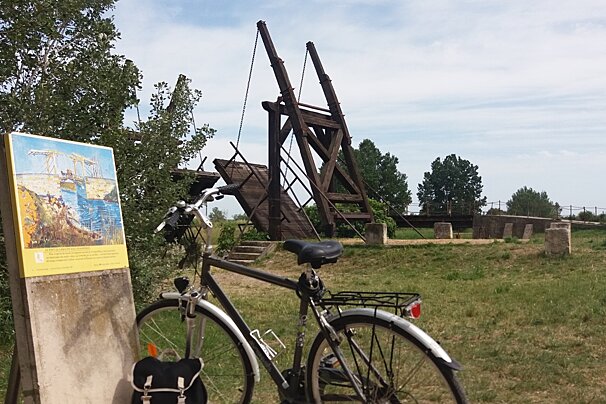
Take a gentle bike ride through Arles along the Rhône River to visit the subject of one of Van Gogh’s famous paintings.
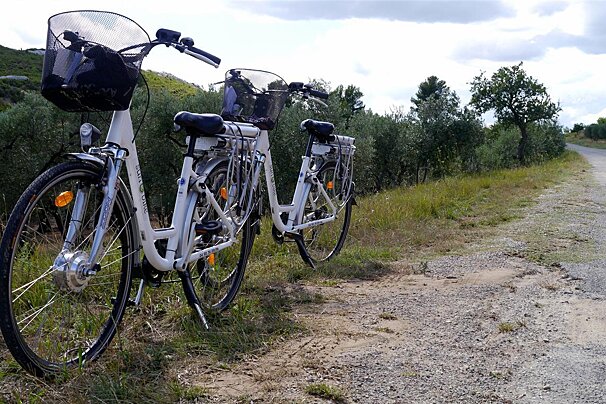
As we have already revealed galloping along the Alpilles on horseback is a jolly good way of touring the stunning scenery that this Parc Naturel has to offer, but for a more modern (lazy) approach there is an alternative - the electric bike.
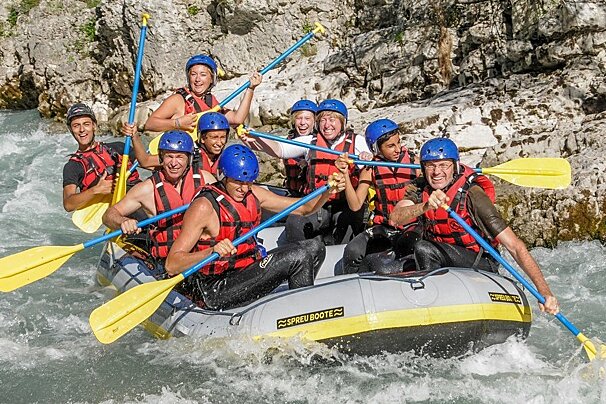
Coming on holiday to Provence doesn't necessarily have to mean that you have to step down a gear and enjoy a slower pace of life, although there's absolutely nothing wrong with that.
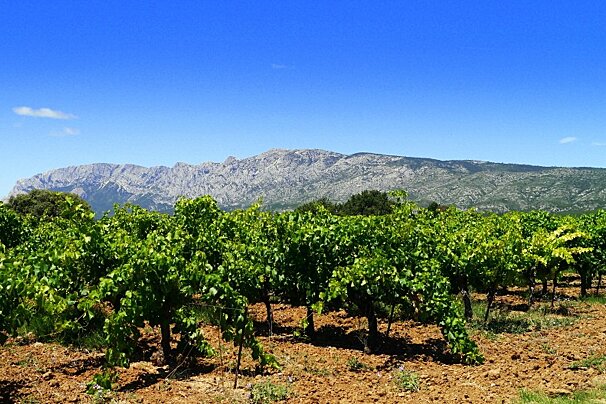
Touring the Mont Sainte Victoire is a perfect escape from Aix-en-Provence to see a wild side of Provence, share some of Cesanne's views and taste some fine wines en route.
Find out all about what is happening in Provence and how to make the most of your time here. The latest news, reviews of fun activities, current events and the trendiest restaurants, as well as interviews with leading locals, insider's guides and our top choices for things to do, see and experience in this picturesque French region.
See allLatest News & ReviewsProvence has a busy calendar of events all year round featuring art exhibitions, charming markets, cultural festivals and concerts. Spring and autumn are the time to celebrate local produce while during the peak holiday times, in the summer months, you will find world-renowned music and cultural events like the Choregies d'Orange or the Avignon Festival.
See allUpcoming Events